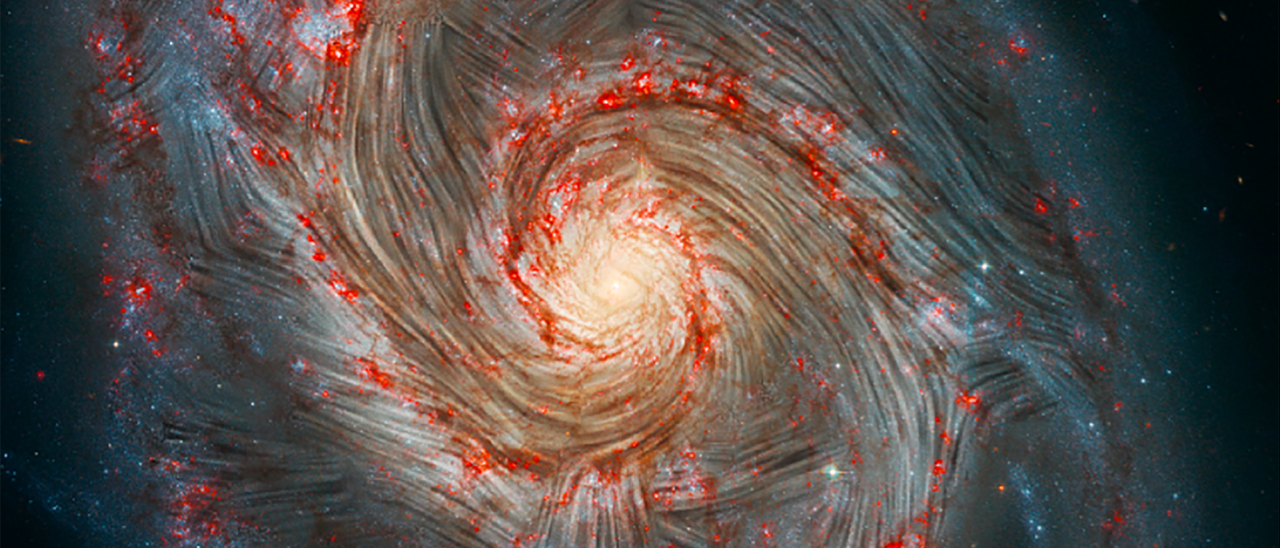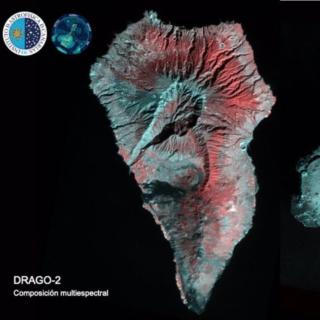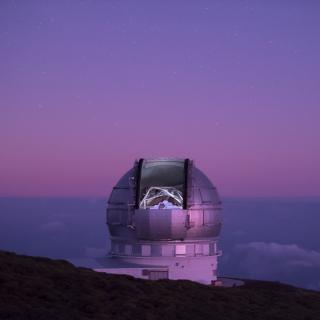There is a force hidden deep inside galaxies: magnetic fields. Invisible to conventional telescopes, they are a factor in galaxy evolution, regulating the formation of new stars and helping to drive intragalatic gas towards their central supermassive black hole.
Magnetic fields can change the motions of gas in galaxies, affecting the distribution of the cold dense molecular clouds where new stars are born, and indirectly producing the migration of stars in the galactic disc. However, to detect their effects we have to map the shape of the magnetic fields in the molecular clouds, which traditional radio astronomy has not been able to do well.
Using the Stratospheric Observatory For Infrared Astronomy (SOFIA), an international team of scientists, led by Alejandro S. Borlaff, a researcher at NASA’s Ames Research Center in California, who took his doctorate at the Instituto de Astrofísica de Canarias (IAC), has been able to map and derive the morphology of the magnetic field of the molecular gas in the Whirlpool galaxy (M51).
The data were obtained with the High Resolution Airborne Wideband Camera (HAWC+) on SOFIA and compared with maps of the magnetic field in the diffuse gas of this galaxy made with the radio telescope Karl G. Jansky Very Large Array (VLA) in Socorro, New Mexico (USA). The results have just been published in The Astrophysical Journal.
In the inner part of the galaxy all the lines of the magnetic field have a regular spiral structure, but in the outer zone, above all close to M51b the smaller companion galaxy of M51, the magnetic field in the molecular clouds shows major differences in orientation compared to the more regular structure found using radio waves in the magnetic field of the diffuse gas,
“The uncoupling of the two magnetic fields could be related to the gravitational interaction with M51b, but we were surprised to find that this is not found in the region between spiral arm and spiral arm, where the gas density is much lower and fewer stars are forming”, explains Alejandro S. Borlaff, the first author of the article.
“Models of the structure and evolution of galaxies have been based on the assumption that the diffuse gas and the molecular gas share a common magnetic structure. The most important result of this study is the proof that we will have to incorporate in new models the force exerted by the magnetic field in the molecular clouds”, says John Beckman, an IAC researcher who is a co-author of the article.
The spiral arms seem to be the key to the relation between the magnetic fields and the formation of galaxies. These arms are populated by massive, young and hot stars, formed by the pressure of density waves, which rotate periodically around the galaxy. We can picture these spiral density waves as being like the stationary waves in musical instruments, but rotating around the galactic disc.
These waves compress the interstellar gas in spiral form, forming new stars, and can also compress the magnetic field. The hypothesis of the researchers is that star formation can generate new, turbulent magnetic fields, which can be reorganized in spiral arm shape by the compression of the density waves, and the rotational motion within the galaxy.
One of the main points in the research has been to compare the shape of the magnetic fields using an infrared tracer and a tracer with radio waves. While the observations with the Very Large Array radio telescope can detect the magnetic fields in the diffuse low density intragalactic medium, the SOFIA stratospheric observatory can detect the presence of turbulent magnetic fields in different regions of the galaxy, exploring how this invisible force interacts, according to the different conditions of pressure, gravity and velocity within the galactic disc.
The results obtained with SOFIA on the Whirlpool galaxy are similar to those already registered on the magnetic field of the Milky Way, but have never been obtained in an external galaxy due to the great difficulty of making the measurements. The observations imply that to model the phenomenon of star formation in spiral galaxies it will be necessary to take into account, and to quantify their magnetic fields, as well as the shapes of their gravitational fields.
Article: Alejandro S. Borlaff et al. “Extragalactic Magnetism with SOFIA (Legacy Program) -- I: The magnetic field in the multi-phase interstellar medium of M51”. The Astrophysical Journal, November 9, 2021. DOI: https://doi.org/10.3847/1538-4357/ac16d7 Arxiv: https://arxiv.org/abs/2105.09315
The image “The Magnetic Field of the Whirlpool Galaxy” was APOD on January 20, 2021: https://apod.nasa.gov/apod/ap210120.html
Contact at the IAC:
- John Beckman: jeb [at] iac.es (jeb[at]iac[dot]es)



